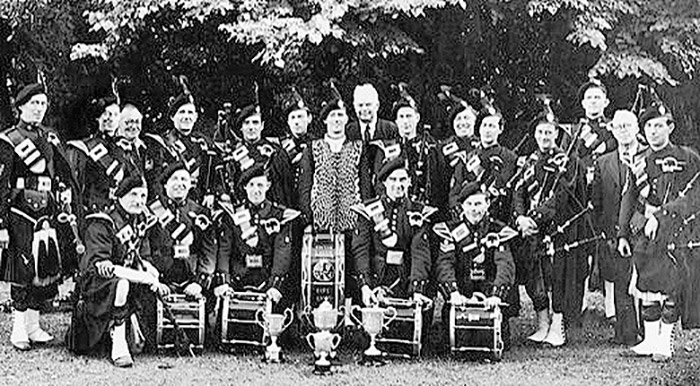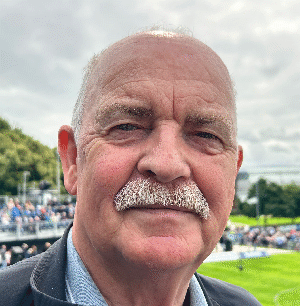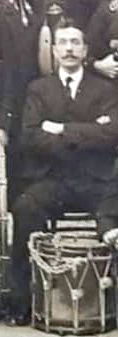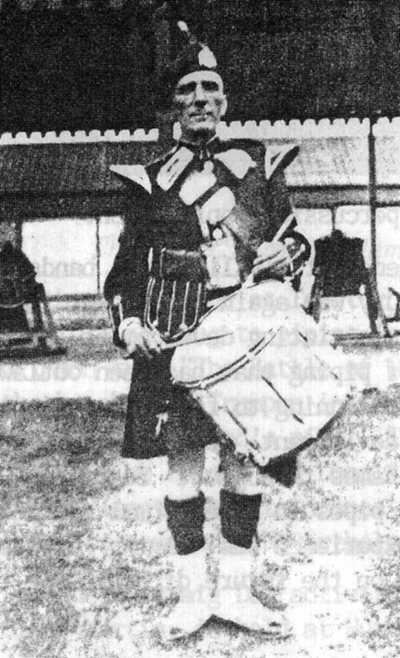
We continue with part two of the history of one of Ireland’s most famous bands, Fintan Lalor, Dublin.
In 1918 the Army Council of the Irish Citizen Army decided to reactivate the Fintan Lalor with Stephen Murphy as pipe major and in the council’s correspondence the title ‘Irish Citizen Army Pipers’ Band’ is used as much as the original one.
An appeal for funds in 1919 brought donations from public figures such as Arthur Griffith, W. T. Cosgrave, and Éamonn De Valera together with an exceptionally large contribution of £34 10s from New York.

The band accounts for 1921–22 record substantial sums paid to Arnott’s of Henry Street and others for what can only have been items of uniform as it was at this time (or shortly after) that the band adopted its iconic colours of red tunic, green kilt and shawl. Further band equipment was bought that year from firms in Dublin, Glasgow, and London.
The accounts also record the payment of £11 1s 6d to Alex Meikle, the Scottish piper and teacher whose training was to lay the foundation of the band’s later competitive success.
[wds id=”2″]
Pipe Major Alex Meikle, who had been a prisoner of war in Germany, had settled in Dublin after he was demobbed He married a Scots girl who was living in the city and who he is understood to have met while stationed there as the pipe major of a Scottish regiment, possibly the Royal Scots Fusiliers.
The early years of the 1920s saw the War of Independence (1919–21) and the Civil War (1922–23), however after the ceasefire, while the band continued to perform at political and social events, the emphasis moved towards competition with a steady run of success in contests in Ireland.
Pipe Major Paddy Solan
By 1926 the band was now operating from the Gardiner Hall, 48 Lower Gardiner Street, Dublin, which was to be its headquarters for many years. That same year Stephen Murphy resigned as pipe major and was succeeded by Paddy Solan who, over the succeeding years, set about strengthening the band. (The band under P/M Solan is pictured at the head of this article.)
At this point the band was becoming a leading contender within the Eire pipe band scene which was administered under the auspices of the ‘Piobairi Na h-Eireann’.
The band was broadcasting annually on Dublin 2RN which became Radio Athlone in 1933 and in due course became Radio Eireann.

In 1931 the pipe corps was strengthened by the addition of a father and two sons, John Keogh and his son Sean (later a drummer), both of whom had played in the lately defunct Howth Pipe Band, and 13 year-old T.J. (Tim) Keogh, a gifted all-round musician who would lead the band to some of its greatest triumphs in the 1950s and 1960s.
A third Keogh brother, Liam, joined in the 1930s while he also re-engaged Alex Meikle (left) as instructor and in 1932 drummer Paddy Donovan came on board and during his fifteen year membership he would go on to become one of the great legends of pipe band drumming.
Paddy Solan attended the 1930 World Pipe Band Championships at the Cowal Highland Gathering in Dunoon, Argyllshire, and it was after this that he conceived the idea of bringing his own band over to compete.
In 1934 they made their first visit to Dunoon when they were placed second in drumming behind the winners. They scored their first success in 1937, winning the Benmore Shield and the Hamilton Shield for drumming in what was termed as the General Drumming Contest.
They were the first non-Scottish pipe band to win a prize in such a competition and to consolidate their reputation their drum corps were placed 2nd in the Open Drumming Contest a point behind the winners Glasgow Corporation Transport.
The last survivor of those who played that day, Paddy Leech, died in 2003. The Hamilton Shield came their way again in 1938 and in 1939. In 1938 they were the only Irish band to receive an invitation to play at the Empire Games in Glasgow which they did so in the company of the top grade Scottish Bands of the day.
World Drumming Champions in 1939
In 1939 they became the first band from outside Scotland to win the World Drumming Championships which was an outstanding achievement and one which would cement the reputation of leading drummer Paddy Donovan as one of the greatest innovators of the art and as someone who would influence the drumming of many of the leading practitioners in the following years.
Paddy Donovan had been a drummer boy in the Connaught Rangers but was discharged after three years’ service before he then re-enlisted in the Royal Field Artillery during the second half of the Great War. Paddy’s early experience of drumming involved him competing successfully with the O’Connell Flute and Drum Band from Dublin. He came late to pipe bands joining the Fintan Lalor in 1932 as drum instructor and lead drummer.

His unique style revolutionised the pipe band drumming scene of the time, and in 1939 at the Cowal Gathering his Fintan Lalor drum corps won the drumming prize to become World Champions. Legendary drummer Alex Duthart who had Ulster connections through his father cited Paddy Donovan as a musical influence. Such was his esteem for Paddy that whilst attending a summer school in North America in the 1970s Alex wrote a pipe tune and named it after him.
Paddy played with Fintan Lalor for about fifteen years before leaving in 1947 to join the St. Laurence O’Toole Pipe Band who he remained with until 1949. He played with them at the All-Irelands that year in Belfast, after which he took ill and sadly did not recover, passing away on the 9th January 1950.
It is interesting to note that the Fintan Lalor were one of at least half a dozen Eire bands who were members of the Scottish Pipe Band Association around this time and in 1939 became part of the formation of the Irish Pipe Band Association out of the ‘Piobairi Na h-Eireann’ organisation.
- To be continued.


















